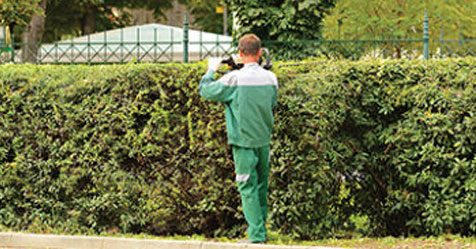Pests are usually considered a warm-weather nuisance, with mosquitos sneaking in during the summer and carpenter ants encroaching in the spring. But winter weather can bring the most dreaded pests, including rodents and cockroaches, into your facility. Just like humans, pests seek out warmth during the winter to maintain their body temperatures. Buildings provide shelter, along with an abundance of food and water, for insects, rodents, and even some mammals seeking a cozy home during the cooler weather months.
Pests bring a multitude of problems that could be disastrous for your building, your tenants and your bottom line. Implementing an integrated pest management (IPM) program is a proactive approach to facility maintenance that will keep pests away from your facility this winter. A savvy and environmentally responsible solution, an IPM program seeks to prevent pest activity before it occurs and reduce dependency on chemical treatments. The process is not a one-time event but an ongoing cycle of three critical activities:
- Assessing the situation in your facility
- Implementing specific, science-driven solutions based on findings
- Monitoring pest activity to make sure the techniques are working.
Know the Culprits
Before winterizing your facility, you need to know the pests you’ll be up against:
- House mice: The most commonly encountered rodent in the United States, house mice keep warm in attics and basements during the winter. When they infest facilities, they can cause structural damage by chewing through drywall and electrical wires. They also can spread pathogens that cause foodborne illnesses.
- Norway rats: These rats will gnaw through almost anything—including plastic and lead pipes—to find food, water, and warmth.
- Raccoons: Although an unconventional pest, raccoons are common in wooded areas and around trash receptacles. They can enter facilities through attics or basements, and they are one of the primary carriers of rabies.
- Cockroaches: These pests are extremely resilient and some can live without water for up to ten days. Cockroaches reproduce quickly and are nocturnal, so seeing one in the daytime could indicate you have an infestation.
- Flies: Although typically associated with the summer, these pests breed rapidly indoors during the winter months. Flies can transmit harmful pathogenic microorganisms, and their larvae can develop into adult flies in approximately a week.
Set Up Your Barriers
Incorporate these four winterization tips into your IPM program to leave pests outdoors where they belong:
- Close off all entry points. Leaving any holes or cracks in your facility’s exterior rolls out the welcome mat for pests. After all, rats only need a quarter-size hole to squeeze into a facility, and mice need an opening the size of a dime. And that’s not the worst of it—cockroaches only need one-sixteenth of an inch. Be vigilant about inspecting your building’s exterior for holes, cracks, or other openings. Apply weather-resistant sealants and, where appropriate, incorporate copper mesh to prevent rodents from gnawing through. Pests also may use doors and windows as their entry points, targeting openings around the frames. Install door sweeps and use weather stripping to seal cracks around the edges of windows. Install No. 16-sized mesh screens over windows to prevent small, flying insects from entering.
- Redirect airflow. For humans and pests alike, work doesn’t stop in the wintertime. Tenants and office workers will continue to enter and exit your facility throughout the cold months, opening the door for pests to make their appearance. Create a positive airflow to push pests back outdoors. Flying pests will have a hard time flying against the pressure. If you have negative airflow, you may actually be pulling pests into your building. If this is the case, contact a professional to correct ventilation issues. Installing an air curtain also can help create a deterring current for flying pests.
- Monitor waste. Food residue and odors are magnets for pests, drawing them toward—and eventually inside—your building. By remaining vigilant about trash and dumpster maintenance, you can help reduce the likelihood of a pest infestation. Dumpsters should be kept at a distance from your building and at least 50 feet from any door or entryway. Keep dumpster lids firmly shut and rinse the exterior of dumpsters every month to eliminate food residue. Work with your waste management provider to clean and rotate dumpsters frequently. Encourage your office tenants to always use plastic liners in their trash bins and to proactively remove waste whenever the bins are full. Pest prevention is a team effort that requires the cooperation of all building stakeholders.
- Maintain the exterior. Managing lighting and landscaping are two cost-effective ways to help prevent an infestation. Because insects are attracted to bright light, sodium vapor light fixtures that cast a softer, yellow light are recommended for use close to or on your building. Use reflective light to draw pests away by placing exterior lights a distance from the building and directing them to shine on the building façade. Tenants will still be able to see as they approach the building and pests will be attracted to lights away from the facility. Trim trees and shrubs so that they do not touch the exterior of your building, as this could create a path for pests to get inside. Keep vegetation at least two feet from the building façade to help prevent insects from walking or jumping from the vegetation onto the building exterior.
Don’t let a pest infestation ruin your winter. By incorporating these tips into your maintenance and sanitation routines, you will be well on your way to an effective IPM program. In addition, consider hiring a pest management provider to inspect your property and create a customized solution that is tailored to your building’s weak spots and pest threats. By planning ahead, you can leave pests out in the cold this winter.




